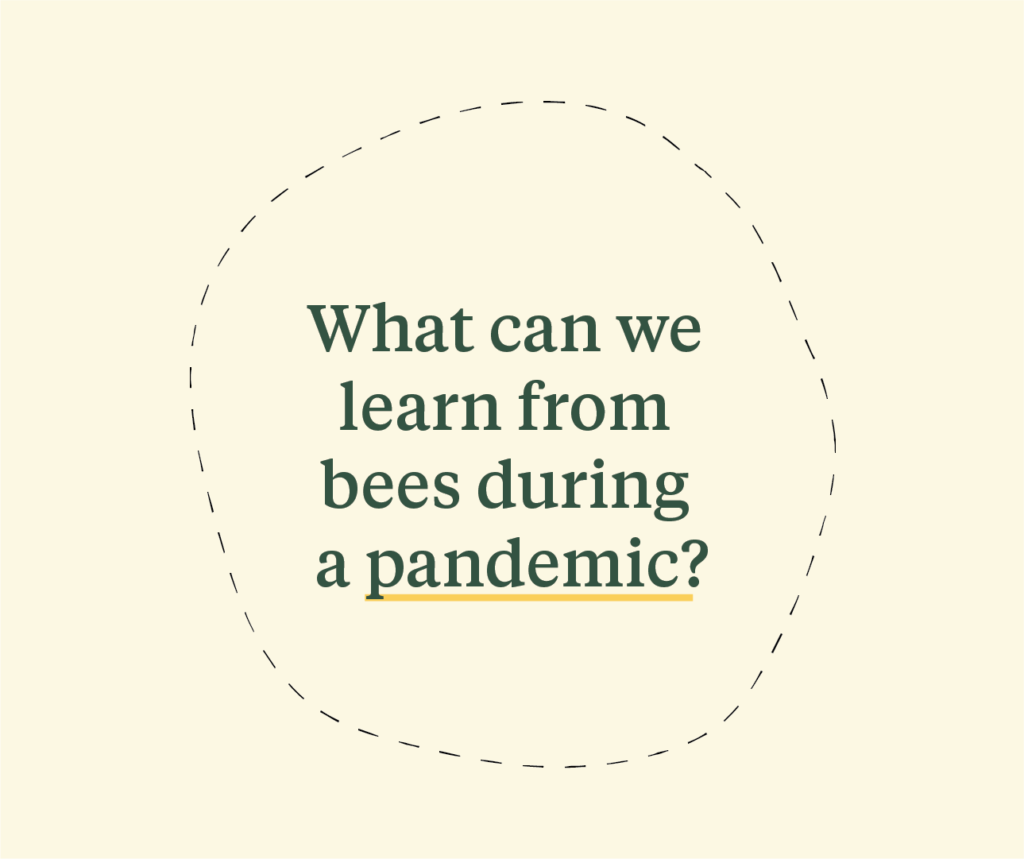Bees are a lot like us
On World Bee Day 2020, things look a bit different than in years past. As the bees get on with their business outside, we humans are for the most part still quarantined inside, watching spring happen from behind our windows.
And while this spring is certainly not the one we were expecting, it can still provide us with some valuable insight. Our resident bee expert Noah Wilson-Rich Ph.D. shed light on some important things we can learn from bees to help us during the COVID-19 crisis.
After all, we have a lot more in common with bees than you might realize. We’re both highly social creatures living in often densely packed areas. If an infection hits a beehive or a human city, it can spread quickly and devastatingly.
Many of the things bees do to stay safe and slow the spread of disease in their communities are the same things the CDC has recommended we humans do to slow the spread of COVID-19. And with over 100 million years of survival success to draw on, we’re inclined to listen to the bees.
Aseptic Behavior: Bees keep things clean to lower risk
One thing bees do that we can learn from is something called aseptic behavior, AKA lots of cleaning. Inside the hive, the work bees do is largely determined by their age. And the teen bees are responsible for a lot of the cleaning. They use their saliva to coat the nest with antimicrobial substances that protect the hive, so diseases have a harder time getting in.
While we definitely don’t recommend licking anything to clean it, we do think that the bees’ policy of continuously cleaning is one that we should keep in mind. Keeping our homes and hands clean has proven to be one of the most effective ways to stop COVID-19 from spreading, and while it might be a burden to wash your hands so many times every day, we can look to bees to see that cleaning is actually a solid strategy to preventing infection.
Hygienic behavior: Bees do their own version of social distancing
With social distancing as the ultimate buzz words of 2020 (no pun intended), we’ve seen that bees actually have their own form of social distancing when there are sick bees in the hive. This is a form of hygienic behavior that involves isolating the diseased members away from the other bees to reduce the spread of infection.
Similar to staying inside our homes to reduce our exposure to at-risk communities, bees remove the dead or diseased bees from the nest to slow the spread. The less contact the bees have with the diseased members, the fewer infections there will be. Now that we are a few months into the pandemic, we have seen that social distancing really does yield results for us too. It’s not easy, but it’s good to see that it does have a profound impact.
Social Immunity: Bees make their own medicines
Bees don’t have access to the pharmacies and hospitals that we do. Instead, they have to make their own medicine. After a bee has recovered from an infection, they can spread antimicrobial peptides or medicines produced by their own bodies with their nestmates to help the entire group stay healthier.
Human scientists are doing much the same thing, using the plasma from those who have recovered to treat sick patients.
Bees also create another kind of medicine called propolis, a resin collected from plants used to coat the inside of the beehive. This is a great example of how bees use plants to create medicines just like we do as humans to create soaps and other cleaning products to reduce the risk of infections.
We’re not so different after all
Bees and humans really do seem to fight pandemics in a similar way. However, we both only succeed by working together. It’s inspiring to see the human version of the bee tactics at work in the world today, and while this is still a very trying time, we hope people will continue to unite remotely and work to build an infection-free future.
Happy World Bee Day!






